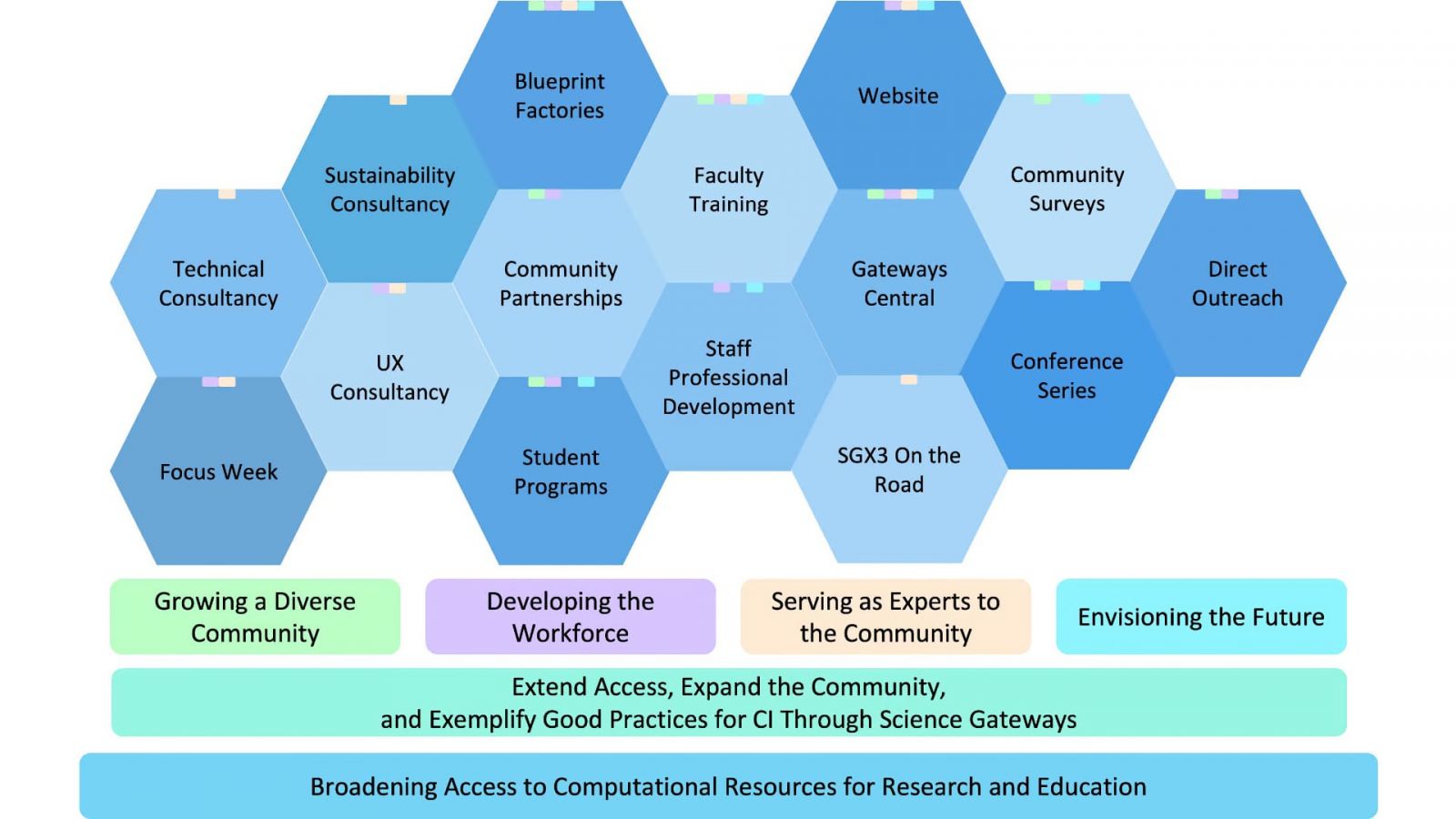A national effort to facilitate collaboration and research related to cyberinfrastructure (CI) has been awarded $7.5 million by the National Science Foundation (NSF).
 Paul Parsons, associate professor of computer graphics technology in Purdue University’s Polytechnic Institute, is collaborating with colleagues from the University of California at San Diego, the University of Texas at Austin, Elizabeth City State University and Indiana University to create CI CoE: SGX3, a Center of Excellence to Extend Access, Expand the Community and Exemplify Good Practices for CI through Science Gateways, or SGX3 for short.
Paul Parsons, associate professor of computer graphics technology in Purdue University’s Polytechnic Institute, is collaborating with colleagues from the University of California at San Diego, the University of Texas at Austin, Elizabeth City State University and Indiana University to create CI CoE: SGX3, a Center of Excellence to Extend Access, Expand the Community and Exemplify Good Practices for CI through Science Gateways, or SGX3 for short.
Science gateways are web-based platforms that allow large audiences of researchers, educators, students and the public to access complex, expensive resources such as supercomputers, scientific instruments, and large data sets, as well as to collaborate as a community. Science gateways are designed to enable researchers to focus on their science questions by making computational methods and complex research infrastructure easier to use.
In 2009, a team led by Nancy Wilkins-Diehr from the San Diego Supercomputer Center (SDSC) began an NSF-funded research project to understand the needs of the research community with regard to science gateways. The info they gathered was used to form the Science Gateways Community Institute (SGCI) in 2016. To date, the SGCI has served over 200 clients with a variety of services, had over 3,400 attendees to its community building events, supported 1,200 students and faculty, and produced 195 research products, according to their website.

As a service organization, SGCI focused primarily on what it could do to help people actively in the endeavor of creating and operating science gateways. In 2022, however, the team decided to share some of its previous experiences in the form of forward-looking documents, to further catalyze the science gateways community by incorporating more participants from domain sciences. They also sought to formalize community-driven, forward-looking blueprints for next-generation emerging needs for future science gateways. This culminated with the $7.5 million award for SGX3, an NSF Center of Excellence.
SGX3 was conceived by Michael Zentner (SDSC), Maytal Dahan (Texas Advanced Computing Center), Sandra Gesing (University of Illinois), Linda Hayden (Elizabeth City State University), Marlon Pierce (Indiana University), Claire Stirm (SDSC) and Parsons (Purdue).
Clients obtain services from both SGX3 and SGCI as appropriate to their needs. SGX3 provides high-level complementary services on a limited basis, while SGCI is available as a partner for science gateway endeavors for more comprehensive engagements.

Parsons serves as SGX3’s user experience consulting lead. He oversees all consulting projects, provides training to students and delivers several tutorials and workshops each year to creators of science gateways.
Since 2018, seven graduate students and eight undergraduate students from Purdue Polytechnic have been funded through SGCI to provide UX (user experience) consulting services to more than 50 science gateway projects.
Parsons also secured REU (research experiences for undergraduates) funding as a supplement to the main NSF award.
“The new grant will provide continued funding for several more students over the coming years, providing a valuable supplement to their classroom experience,” said Parsons. “We are glad to provide opportunities for undergraduates to engage in research at the intersection of cyberinfrastructure and UX, and we will continue to seek out such funding in the future.”
UX design is one of the most popular majors in the Polytechnic’s Department of Computer Graphics Technology.
“Paul’s inclusion in this new NSF Center of Excellence is a testament both to the quality of his research and his role in the strong UX design program that our faculty have developed at Purdue,” said Nathan Hartman, Dauch Family Professor of Advanced Manufacturing and head of computer graphics technology.
Research teams looking for support in development of a science gateway can seek help from SGX3 via the services page on their website.
Additional information
- New NSF Center of Excellence in Cyberinfrastructure announced (UC San Diego Today)
- CI CoE: SGX3 – A Center of Excellence to Extend Access, Expand the Community, and Exemplify Good Practices for CI Through Science Gateways (National Science Foundation award #2231406)
- SGX3, A Center of Excellence and a Software Institute Serving the Science Gateways Community
- SGX3 services
- Parsons receives first NSF CAREER award in Purdue’s Department of Computer Graphics Technology
- User Experience (UX) Design (major)
